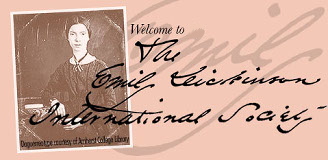
You are hereMorris, Leslie: "A Curatorial Approach to Editing Dickinson"
Submitted by RFranz on July 19, 2013 - 11:00am
A Curatorial Approach to Editing DickinsonLeslie Morris, Houghton Library, Harvard University Curators/librarians/archivists rarely have deep expertise in all the authors whose manuscripts they steward, yet they are often asked to provide help to scholars who are authorities in their field. An Emily Dickinson Archive (EDA) emerged from many years of assisting specialist Dickinson scholars, faculty incorporating Dickinson primary sources in undergraduate teaching, and presentations to undergraduates and fans of Dickinson. Of primary importance, particularly in studying a poet who did not shepherd her work into print, is the easy availability of high-quality images of the surviving manuscripts. While it is possible for all the 20 libraries known to hold ED poem manuscripts to put up images individually, a single, unified site seemed highly desirable. Second in importance to me was the easy availability of the standard scholarly editions, in ED’s case those published by my colleagues across Harvard Yard at Harvard University Press. But, given how difficult ED’s manuscripts have been to capture in print, it seemed useful to have not only those editions that have become the standard references (Johnson and Franklin), but to represent as far as possible all attempts to transcribe those manuscripts; as someone who trained as a historian rather than a literary critic, the evolution of approaches to Dickinson was almost as fascinating as the poetry itself. Several months into planning the EDA, the parameters of the project were stretched beyond the academic community (originally envisaged as the primary audience for the site) at the urging of Robert Darnton, University Librarian at Harvard and one of the moving forces behind the Digital Public Library of America (DPLA). As the site has evolved, we are incorporating more in the way of explication to those who are unfamiliar with ED’s manuscripts and the rich and often complex history of her legacy. I’ll conclude with a summary of what to expect when EDA is launched on October 21, 2013; what the plans are for its future; and some thoughts on how the curatorial perspective has and will shape its further development.
|